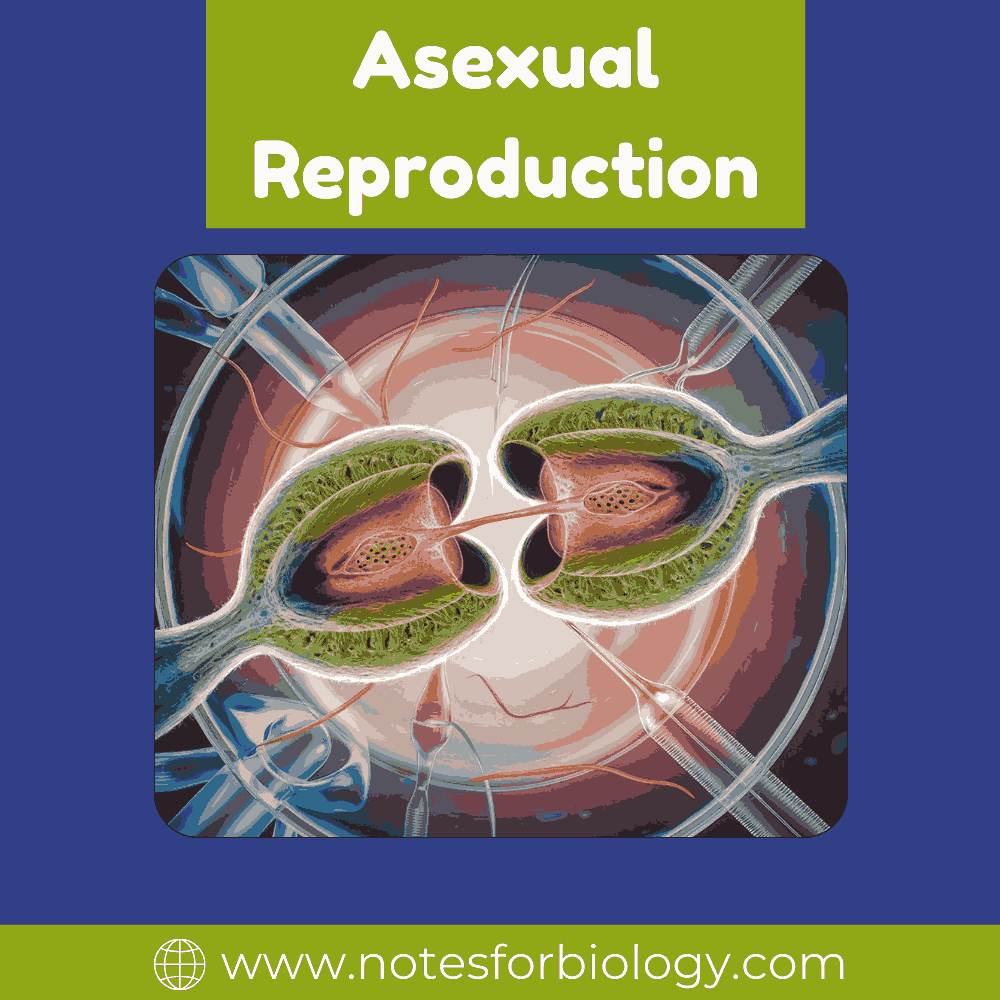Reproduction is a biological process of producing offspring of a living organism. It is the basis for continuing life from generation to generation. It is seen in every living organism; from microorganisms to larger organisms including all plants and animals. Based on the number of parents involved, and the formation and fusion of gametes, there are two types of reproduction; sexual reproduction and asexual reproduction.
Table of Contents
Definition of Asexual Reproduction
Asexual reproduction is a kind of reproduction in which there is no chromosomal rearrangement or gamete fusion. The progeny are genetically similar to their parents since they are descended from a single organism and only get the DNA from that parent. Binary fission, budding, vegetative proliferation, spore production, and fragmentation are some of the techniques used in this process.

Features of Asexual Reproduction
1. Single Parent Involvement
Reproduction requires just one parent.
2. No Gamete Fusion
Without the union of sperm and egg cells, reproduction cannot take place.
3. Genetically Identical Offspring
Since offspring are clones of their parents, there is no genetic diversity.
4. Rapid Reproduction
Rapid population expansion is possible with this approach.
5. Simple Process
Is usually less complicated and requires fewer stages than sexual reproduction.
Types of Asexual Reproduction
1. Binary Fission
The parent organism splits into two equal pieces, each of which grows into a new organism.
Examples include many protozoa, amoebas, and bacteria.
2. Budding
Description: Cell division at a specific location results in the development of a new organism from an outgrowth or bud on the parent.
Examples include some corals, hydra, and yeasts.
3.Vegetative Propagation
The roots, stems, or leaves of the parent plant are the sources from which new plants sprout.
Examples include spider plants, potato tubers, and strawberry plants’ runners.
4. Spore Formation
Spores are produced by organisms and have the ability to grow into new individuals. Spores can withstand extreme environments and are typically single-celled organisms.
Examples include algae, some plants (ferns), and fungi (mushrooms, molds).
5. Fragmentation
The parent organism fragments into smaller parts, each of which has the potential to develop into a new creature.
Planarians, starfish, and some annelid worms are a few examples.
6. Parthenogenesis
An unfertilized egg gives rise to a new living being. It is more typical in some animal species.
Examples include some fish (specific sharks), reptiles (some lizards), and some insects (aphids).
Examples of Asexual Reproduction
1. Bacteria (Binary Fission)
Procedure: The bacterial cell splits into two identical cells after growing to a specific size and replicating its DNA.
Significance: Promotes quick population growth, particularly in conducive environments.
2. Yeast (Budding)
Procedure: On the parent yeast cell, a little bud develops. One of the parent cell’s nuclei travels into the bud as it splits. The blossom develops and finally separates.
Significance: A rapid and effective method to generate a lot of yeast cells.
3. Strawberry Plants (Vegetative Propagation)
Process: Runners, or horizontal stems that grow along the ground, are produced by strawberry plants. The runners’ nodes are where new plants sprout.
Significance: Facilitates rapid dispersal and habitation of novel regions.
4. Mushrooms (Spore Formation)
Process: Sporangia are structures in which fungi generate spores. Released spores have the ability to germinate and grow into new fungi.
Significance: Spores have the ability to endure unfavorable environments and sprout under suitable circumstances.
5. Planarians (Fragmentation)
Procedure: If a planarian is sliced into pieces, each fragment has the ability to regrow into a whole organism.
Significance: Highlights certain creatures’ amazing capacity for regeneration.
6. Aphids (Parthenogenesis)
Method: Aphid females do not need to mate in order to produce progeny. The children and the mother share the same genetic makeup.
Significance: Promotes quick population expansion, particularly in stable settings with plenty of resources.
Frequently Asked Question
1. What are the features of asexual reproduction?
Asexual reproduction is the process by which children are produced by a single parent. Both genetically and physically, the children are similar to one another. Their parent cell is exactly duplicated in them.
2. What is a key feature of reproduction?
The creation of children is known as reproduction. The two primary types of reproduction are asexual and sexual. An organism becomes genetically distinct during sexual reproduction by combining the genetic material from each of its parents. Asexual reproduction creates genetically identical kids by having one parent replicate itself.
3. What are features of human reproduction?
The fundamental components of human reproduction are as follows: (1) release of an egg at a particular point in the reproductive cycle; (2) internal fertilization of the ovum by spermatozoa, or sperm cells; and (3) transport of the fertilized ovum, assuming all organs are present, normally constructed, and functioning as intended.
Related Article

